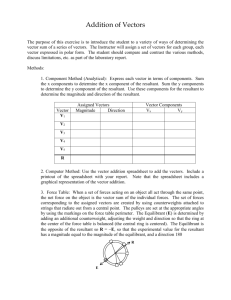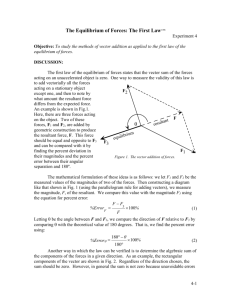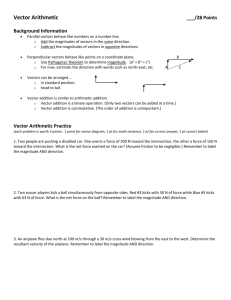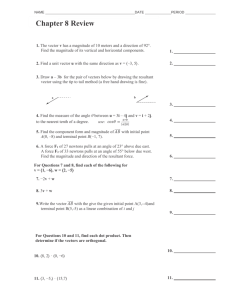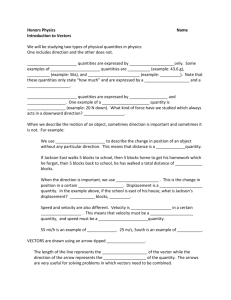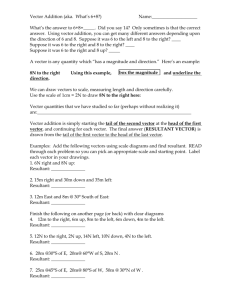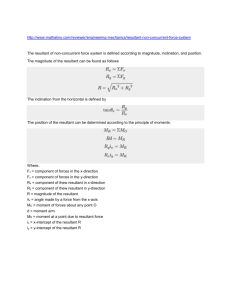CP PHYSICS - Brookwood High School
advertisement
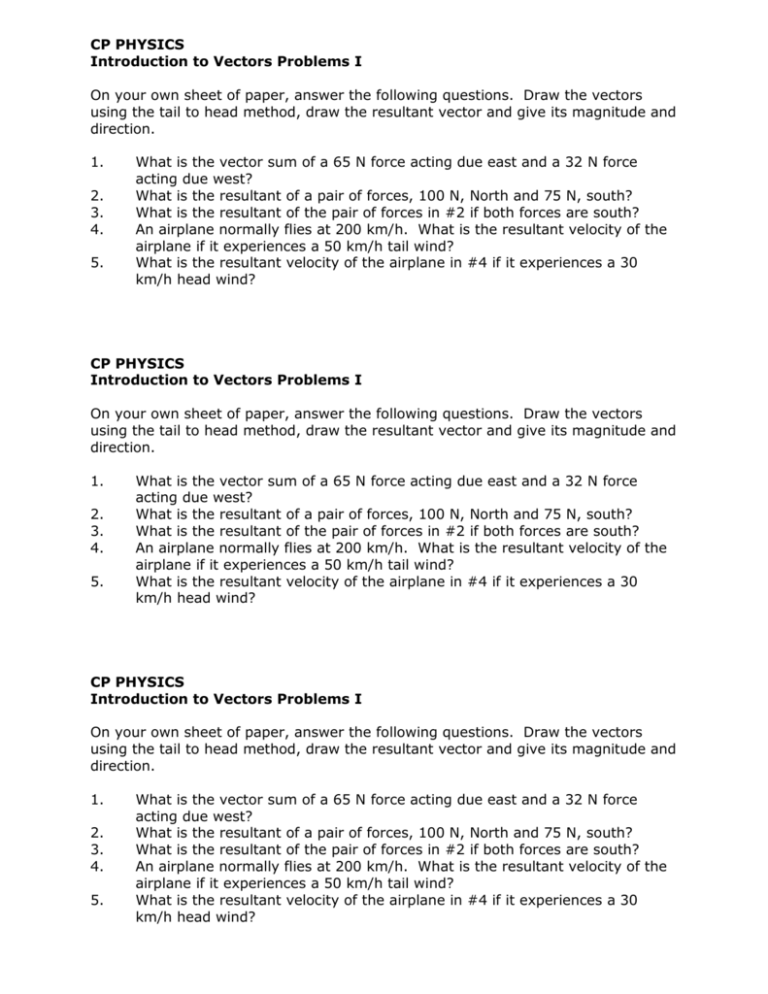
CP PHYSICS Introduction to Vectors Problems I On your own sheet of paper, answer the following questions. Draw the vectors using the tail to head method, draw the resultant vector and give its magnitude and direction. 1. 2. 3. 4. 5. What is the vector sum of a 65 N force acting due east and a 32 N force acting due west? What is the resultant of a pair of forces, 100 N, North and 75 N, south? What is the resultant of the pair of forces in #2 if both forces are south? An airplane normally flies at 200 km/h. What is the resultant velocity of the airplane if it experiences a 50 km/h tail wind? What is the resultant velocity of the airplane in #4 if it experiences a 30 km/h head wind? CP PHYSICS Introduction to Vectors Problems I On your own sheet of paper, answer the following questions. Draw the vectors using the tail to head method, draw the resultant vector and give its magnitude and direction. 1. 2. 3. 4. 5. What is the vector sum of a 65 N force acting due east and a 32 N force acting due west? What is the resultant of a pair of forces, 100 N, North and 75 N, south? What is the resultant of the pair of forces in #2 if both forces are south? An airplane normally flies at 200 km/h. What is the resultant velocity of the airplane if it experiences a 50 km/h tail wind? What is the resultant velocity of the airplane in #4 if it experiences a 30 km/h head wind? CP PHYSICS Introduction to Vectors Problems I On your own sheet of paper, answer the following questions. Draw the vectors using the tail to head method, draw the resultant vector and give its magnitude and direction. 1. 2. 3. 4. 5. What is the vector sum of a 65 N force acting due east and a 32 N force acting due west? What is the resultant of a pair of forces, 100 N, North and 75 N, south? What is the resultant of the pair of forces in #2 if both forces are south? An airplane normally flies at 200 km/h. What is the resultant velocity of the airplane if it experiences a 50 km/h tail wind? What is the resultant velocity of the airplane in #4 if it experiences a 30 km/h head wind?

